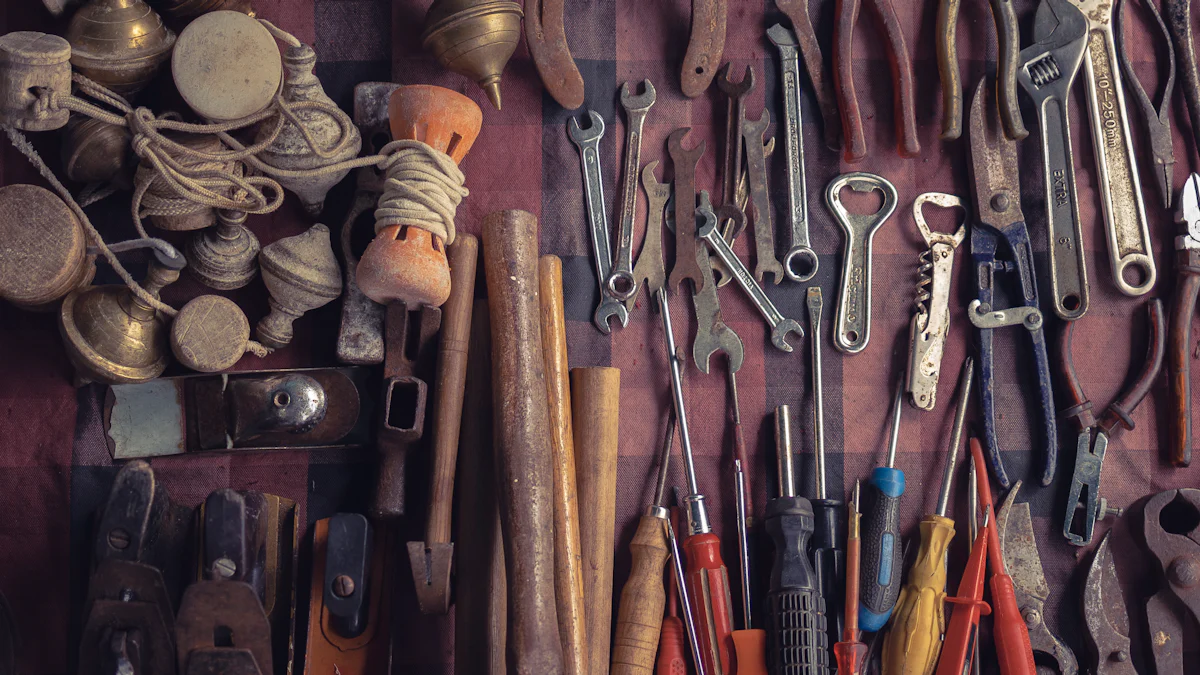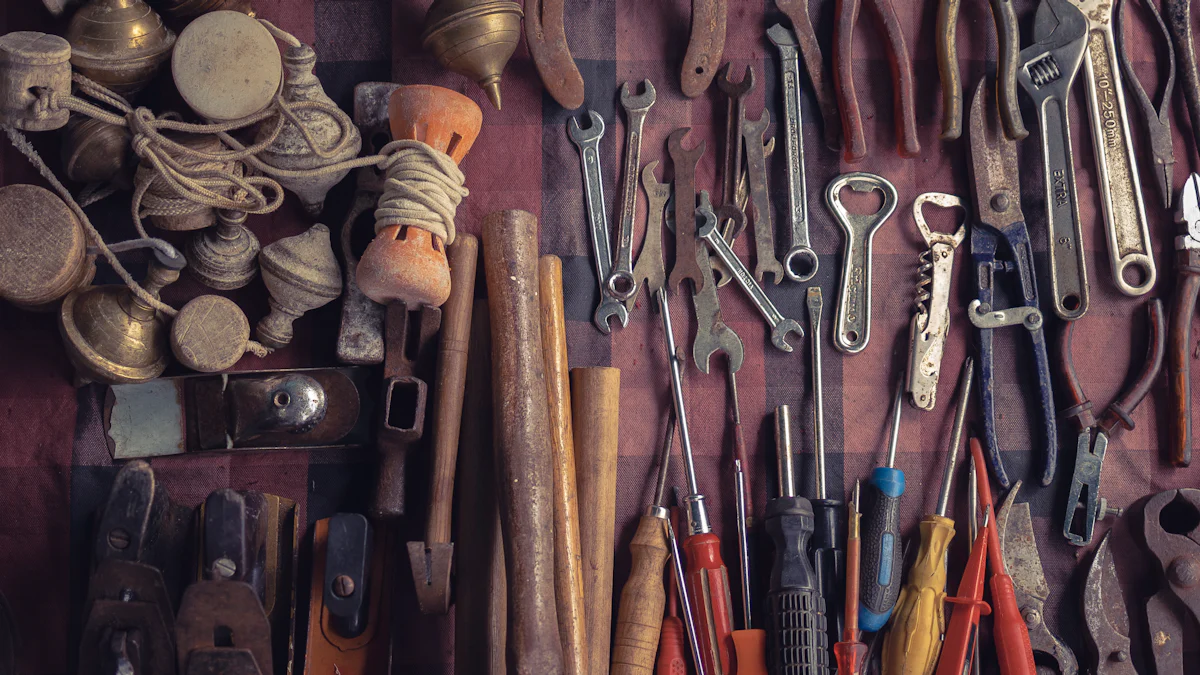
Antique railroad hand tools captivate collectors and history enthusiasts alike. These tools offer a tangible connection to the past. Each tool tells a story of the railroads’ expansion and the industrial revolution. The historical significance of these artifacts makes them desirable collectibles. Tools from the mid to late-19th century hold particular value due to their rarity and age. Understanding the worth of these tools requires knowledge of market trends and historical context. Platforms like eBay and Etsy provide opportunities for buying and selling these collectibles. Collectors often seek larger equipment, such as screw jacks, which fetch higher prices.
The Historical Significance of Antique Railroad Hand Tools
Origins and Development
Early Tools and Their Uses
The origins of antique railroad hand tools trace back to the early 19th century. Workers used these tools for building and maintaining the burgeoning railroad networks. Robert Livingston Stevens invented the railroad spike in 1832, which revolutionized rail fastening. This invention became the most common rail fastener in North America. Workers relied on hammers, wrenches, and spikes to secure rails to wooden ties. These tools ensured the stability and safety of the railroads.
Railroad workers also used tools to maintain buildings, cars, and locomotives. A complete tool kit was essential for railway maintenance. Proper maintenance saved time during critical operations. The tools varied significantly in the collector’s market due to their historical significance.
Evolution Over Time
Antique railroad hand tools evolved over time. The introduction of handcars in the 1860s marked a significant development. Handcars, propelled by a hand crank, allowed workers to travel along the tracks. However, these handcars were later deemed dangerous and mostly out of service by 1887. The evolution of tools mirrored the technological advancements in the railroad industry. New tools emerged to meet the demands of expanding rail networks.
Role in Railroad Expansion
Tools Used in Major Railroad Projects
Antique railroad hand tools played a crucial role in major railroad projects. Workers used track wrenches, spike pullers, and other specialized tools. These tools facilitated the construction and expansion of railroads across vast distances. The legendary folktale of John Henry highlights the importance of these tools. John Henry fought for workers’ rights by hammering giant railroad spikes. His story symbolizes the human effort behind railroad expansion.
Railroad projects required a wide array of tools. Each tool had a specific purpose in the construction process. The tools ensured the proper alignment and stability of the tracks. Collectors now seek these tools for their historical value and craftsmanship.
Impact on Industrial Growth
Antique railroad hand tools significantly impacted industrial growth. The expansion of railroads fueled economic development. Railroads connected distant regions and facilitated trade. The tools used in railroad projects contributed to this growth. Workers relied on these tools to build and maintain the infrastructure.
The industrial revolution saw rapid advancements in technology. Antique railroad hand tools reflect the ingenuity of that era. Collectors value these tools as artifacts of industrial history. The tools symbolize the hard work and determination of the workers who built the railroads.
Types of Antique Railroad Hand Tools

Commonly Collected Antique Railroad Hand Tools
Track Wrenches
Track wrenches serve as essential tools in the maintenance of railroad tracks. Workers use these wrenches to tighten and loosen bolts that secure the rails. The design of track wrenches allows for a firm grip on the nuts and bolts. This ensures the stability of the rail lines. Collectors appreciate track wrenches for their sturdy construction and historical significance. The value of track wrenches depends on their condition and age.
Spike Pullers
Spike pullers play a crucial role in the removal of railroad spikes. Workers rely on these tools to extract spikes from wooden ties. The design of spike pullers provides leverage, making the task easier. These tools help maintain the integrity of the tracks by allowing for quick repairs. Collectors often seek spike pullers due to their unique design and functionality. The rarity of certain models increases their desirability among enthusiasts.
Rare and Unique Finds
Specialty Tools
Specialty tools encompass a wide range of items used for specific tasks in railroad maintenance. These tools include equipment like rail alignment devices and crowbars. Workers use these tools to ensure proper track alignment and stability. The intricate design of specialty tools reflects the ingenuity of the era. Collectors value these tools for their craftsmanship and historical importance. The limited availability of certain specialty tools makes them rare finds.
Limited Edition Tools
Limited edition tools hold a special place in the world of antique railroad hand tools. Manufacturers produced these tools in small quantities for specific projects or events. The unique features of limited edition tools set them apart from standard tools. Collectors prize these items for their exclusivity and historical context. The scarcity of limited edition tools often leads to higher market values. Enthusiasts seek these tools as prized additions to their collections.
Assessing the Worth of Antique Railroad Hand Tools
Factors Influencing Value
Condition and Rarity
Collectors place high value on antique railroad hand tools in excellent condition. Tools that have been well-preserved or restored often fetch higher prices. Rusted or damaged tools tend to sell for lower amounts. The rarity of a tool also plays a significant role in determining its worth. Limited edition tools or those from specific historical periods are more desirable. Collectors actively seek these rare items, increasing their market value.
Historical Significance
The historical significance of a tool greatly influences its value. Tools from the mid to late-19th century hold particular importance. These tools played a crucial role in establishing the American railroad system. Collectors value these artifacts for their connection to industrial history. The story behind a tool can add to its appeal and worth. Tools associated with major railroad projects or famous figures attract more interest.
Market Trends and Price Guides
Current Market Demand
The market demand for antique railroad hand tools varies over time. Collectors’ interests and trends influence the prices of these items. Tools from the steam era remain popular among enthusiasts. The demand for these tools often leads to competitive pricing. Online platforms like eBay and Etsy provide insights into current market trends. Collectors monitor these platforms to stay informed about pricing and demand.
Resources for Collectors
Collectors have access to various resources for assessing the worth of antique railroad hand tools. Price guides offer valuable information on market values and trends. These guides help collectors make informed decisions when buying or selling tools. Auctions and antique shows provide opportunities to learn from experts. Networking with other collectors can also offer insights into market dynamics. Collectors benefit from staying informed and connected within the community.
Antique railroad hand tools hold immense historical and collectible value. These tools serve as tangible links to the past, showcasing the resourcefulness of previous generations. Collectors and enthusiasts find joy in exploring these artifacts. The unique craftsmanship and historical significance make them prized possessions. The market for antique railroad tools offers opportunities for discovery and appreciation. Each tool tells a story of innovation and hard work. Embracing these collectibles enriches one’s understanding of industrial history. The journey into the world of antique railroad hand tools promises both educational and aesthetic rewards.
